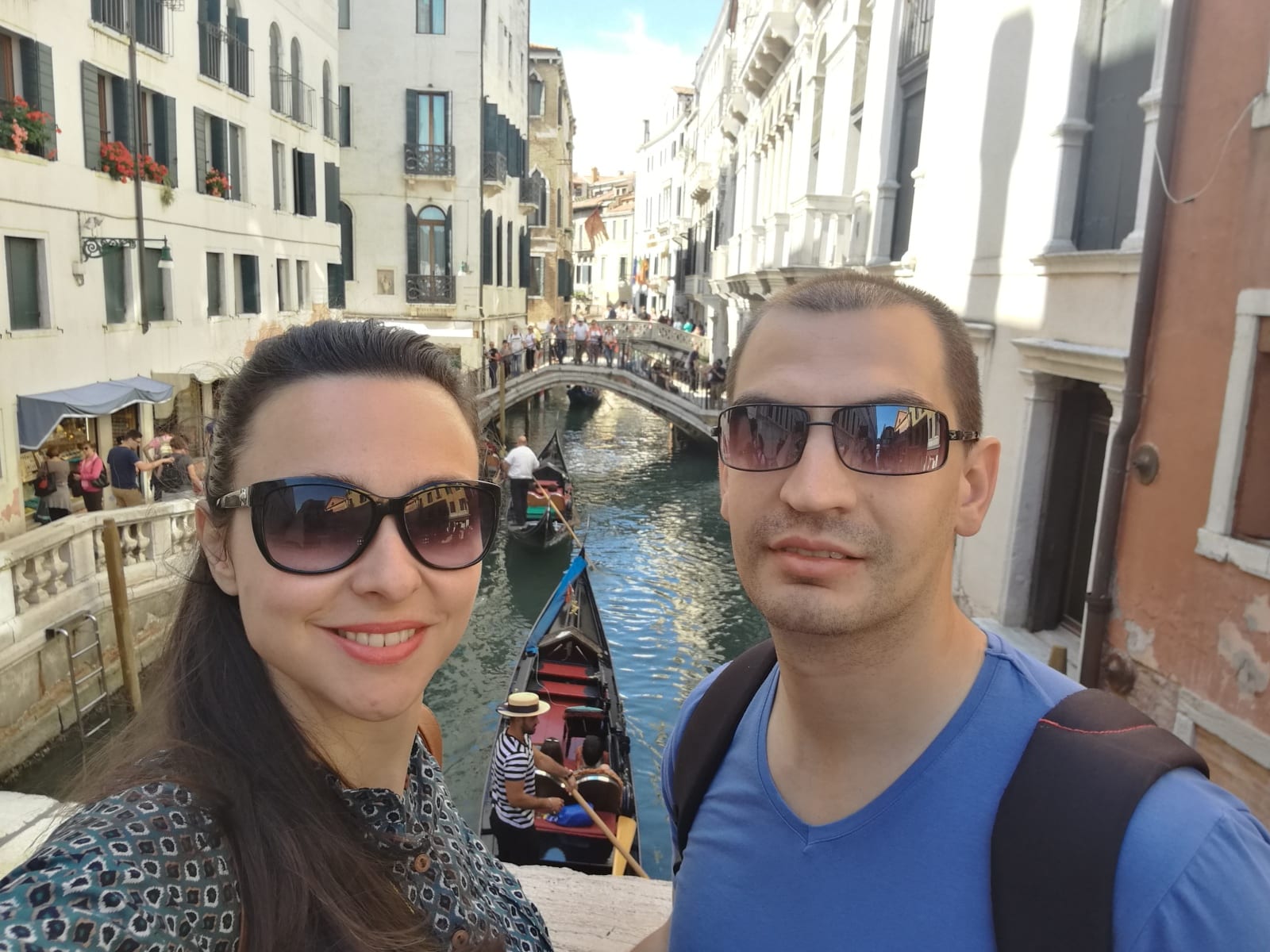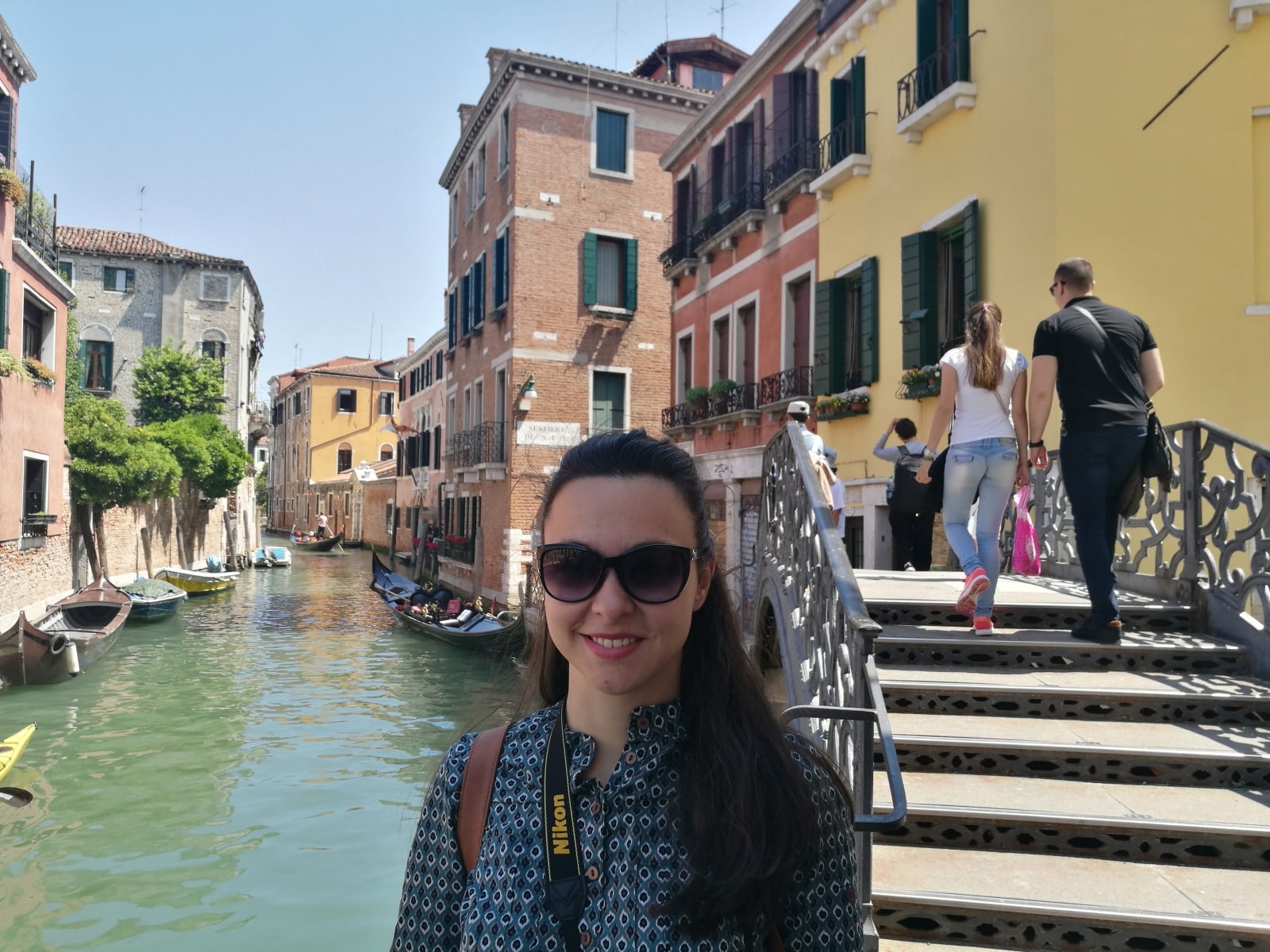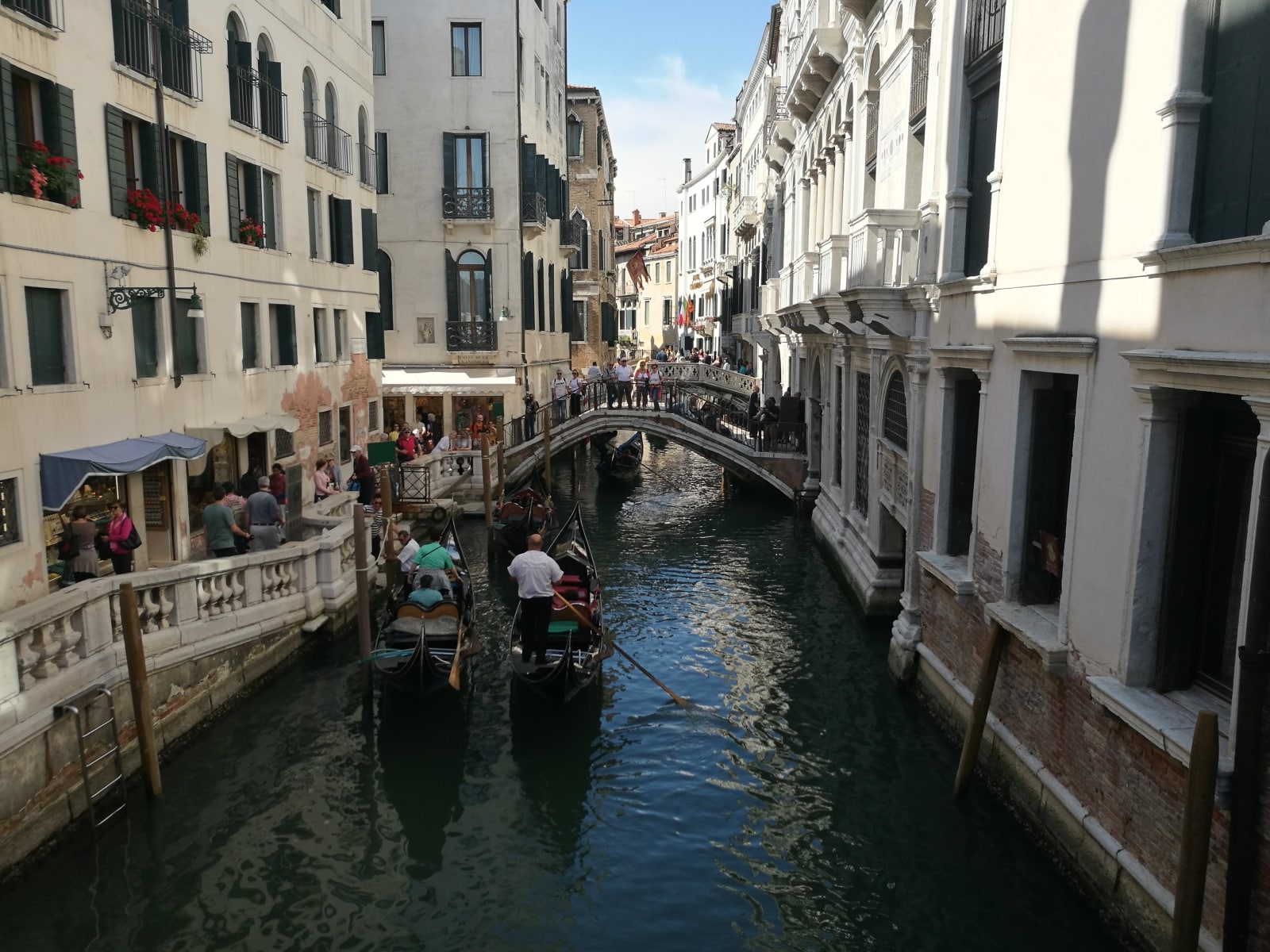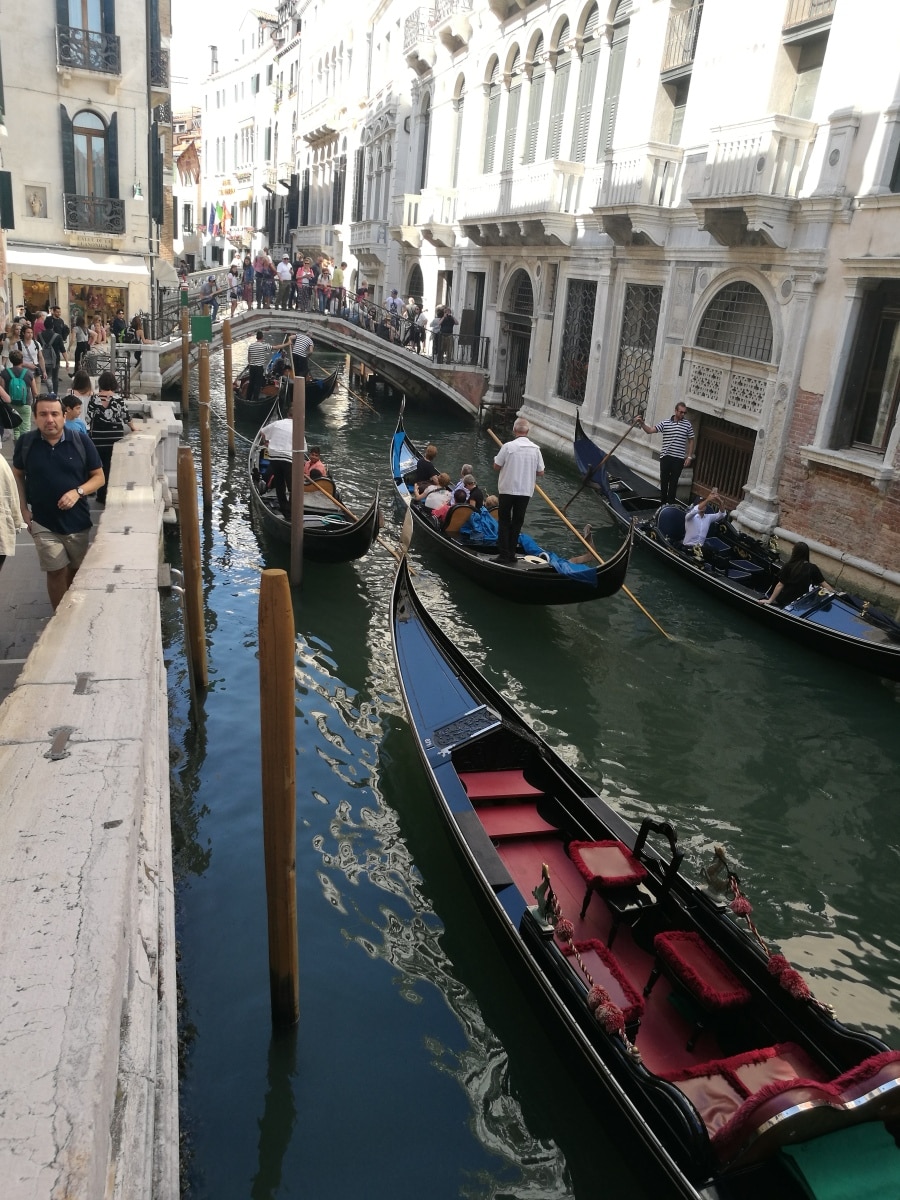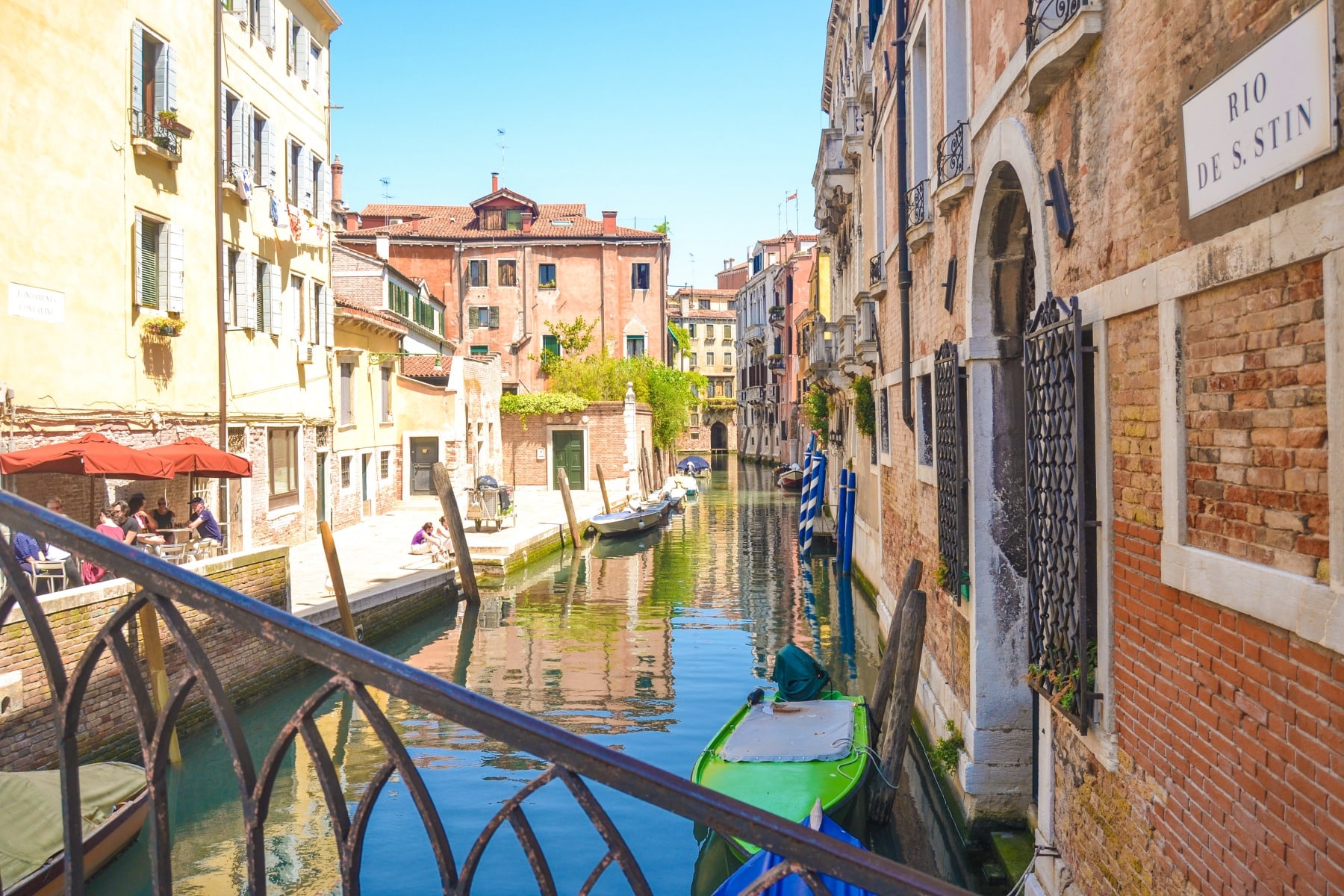
Venice - the town of romance and carnival glory
I begin each article with at least one sentence tо express my strongest emotion from that particular place. However, as I started writing this one, the words simply disappeared for a few minutes and a loud sigh remained: "Venice... oh, Venice!"
Yes! This is Venice! A strong, deep, soulful sigh that is simply worth seeing and everyone should feel it their own way. There are often extremely contradictory opinions about the city - some people like it a lot, others - not at all, but the truth is that no one remains indifferent. Venice is a magical place, with a unique spirit, exquisite architecture and authentic culture that has survived for centuries.

This was my second visit to the city. The first time I was there was with a travel agency in 2013. Even though we only had a single day, I was connected to Venice by strong feelings, which were confirmed the second time.
Dimitar and I love car trips and we planned that trip to Italy in spring. It was just the two of us. We visited Venice, Verona, Maranello and on the way back - Zagreb. We had 5 amazing sunny and warm days, explored a lot and almost broke our pedometers. This article is dedicated to the two days spent in Venice.
What did we see for 2 days in Venice?
Our adventure began by leaving Sofia at 5:00 in the morning by car. We traveled directly, with only a few short stops for rest, food and refreshment. Тhe whole journey took us 12 hours, then finally we reached the hotel. We had stocked up on food and drinks from home, so we didn't waste time eating out.
Accommodation in Venice
Places to stay in the tourist part of the city are at much higher costs than those on the mainland. And it must be quite inconvenient when you travel by car like us. Therefore, when I was choosing a hotel, I looked for a place on the continental part but located nearby public transport. That's how I came across a very cozy and clean little hotel in Maghera - Alle Torri. Right in fornt of it, there was a bus station and 53E, which costed €1.50 and took us to Piazzale Roma in less than half an hour.
We arrived at the hotel in the late afternoon. After a short rest, we caught the bus and we found ourselves among the canals of Venice. Quite leisurely, without being in a hurry for anywhere or anything, we walked through the narrow streets in the direction of St. Mark's Square. The specific atmosphere of the city immediately made us relax and forget the exhaustion of the long journey. We were filled with admiration of the beautiful architecture of the buildings, the numerous bridges over the canals, the tranquility that the surrounding water was spreading over us.
Aristocracy had been hovering all around. We were in a completely different world and it only took a few seconds to realize it. We didn't have an exact plan and schedule to move around. We only had a list of the main attractions and the intention to soak up the atmosphere as much as possible, spending less time in the crowds and more time looking for hidden romantic spots.
Most famous sights
Canals and bridges
Venice is located on numerous islands in a shallow lagoon of the Adriatic Sea. The islands are separated by a total of 170 canals and at the same time connected by 450 pedestrian bridges.
The largest canal, one of the symbols of the city, is the Grand Canal (Canale Grande). It is S-shaped and crosses the central part of Venice. It is almost 4 km long and stretches from the Santa Lucia train station to St. Mark's Square. Almost all city transport is carried out on it. 4 bridges pass over the Grand Canal, two of which are the most famous - the Academy Bridge and the Rialto Bridge.
The next day, after arriving at Piazzale Roma, we took a water taxi - vaporetto, which is part of the city's transport. Line 1 takes a panoramic tour of the Grand Canal from where all the major sights can be seen.

Rialto bridge

Rialto bridge (Ponte di Rialto) is the oldest and one of the symbols of Venice. It is known for its attractive architecture. It was built at the end of the 19th century, entirely of stone with an interesting arch shape. The stone bridge was built in the period 1588-1591 on the site of the original wooden building, which was partially burned down in 1310.
Academy bridge
Academy bridge (Ponte dell’Accademia) crosses the Grand Canal at its lower southern end, connecting the San Marco district with the Academia Gallery. It offers two of the most beautiful views in Venice. On one side it is the dome of Santa Maria della Salute, and on the other, the canal curves towards the Rialto Bridge.
In a city with an impressive stone architecture, it is quite interesting that there is still a wooden bridge. Despite the huge crowds of tourists and illegal sellers of all kinds of trinkets, the wooden bridge is also an attraction for people really looking for the romantic and inspiring atmosphere of Venice.
Basilica of Santa Maria della Salute

Santa María della Salute is one of the most important religious buildings in Venice. Its emblematic dome is illustrated on most souvenirs from the city.
The construction of Salute, as the locals call it, began in 1631 in honor of the end of the terrible epidemic of the plague, which in 1630 killed a large part of the population of the Veneto region. The basilica was built over 56 years and was officially completed in 1687.
The interior of the basilica is octagonal with small chapels on each side. Although the interior decoration of the church is rather simple, there are some impressive frescoes by Titian and Tintoretto.
San Marco square
The water trip through Canale Grande had ended at Saint Mark square. We hopped off the vaporetto, the weather was more than perfect and pleasant for a long distance walk.


Undoubtedly, St. Mark's Square is the heart of Venice. Napoleon used to cal it "the most beautiful drawing room in the world."
Originally, in the 9th century, it was a small space in front of the Basilica of Saint Mark, which was then a small chapel to the Doge's Palace. Today, the square is the largest in the city and is home to some of the most important buildings - the Doge's Palace, the Basilica, the Bell Tower, the Clock Tower, the National Archaeological Museum of Venice.

The bell tower was built on a Roman foundation and is 99 meters high. It was built in the 9th century as a watch tower and lighthouse for Venetian ships. It was designed in this form in 1514. For centuries, the bell tower withstood storms and earthquakes, but in 1902 it collapsed. It was erected again in exactly the same form, and the solemn opening was in 1912, on the day of the patron saint of Venice.
The Venetians call her "the master of the house". There are five bells inside, and each has a specific purpose: one used to mark the beginning and end of the working day, another gathered the magistrates to a meeting in the Doge's Palace, the third announced the time for lunch, the fourth - the meetings of the senate, and the fifth - upcoming execution. The top of the tower offers the most incredible panoramic views of the whole Venice and the lagoon.

The beautiful and famous masquerade is also mainly held on San Marco the Venetian carnival – the biggest holiday in Italy, which attracts thousands of participants and spectators from different countries every year. The Venice Carnival is considered as one of the oldest carnivals. It dates back to the Middle Ages and it is believed that the Venetian aristocrats of the time invented such an event to justify their passionate desire to parade each other in extraordinary outfits and masks.




St. Mark's Square is the lowest point of the city and it gets completely flooded by lagoon's tide several times a year. Fortunately or not, we did not get to witness this natural phenomenon.

The clock tower in Saint Marc's square is one of the most recognizable landmarks of Italy's "City of Lovers". Its history is quite interested to many travelers. The location of the Clock Tower was strategically chosen in the past. From here, according to the architect's idea, the clock would be visible from the coastal waters of the Adriatic Sea, and this would demonstrate the wealth and power of Venice to all guests of the city, stepping on its shores. This was a phenomenal thing for the 15th century, , because if today everyone could buy a clock according to their preferences, in the past not even every city could get one.
Basilica of San Marco


Basilica of San Marco is one of the most visited attractions in Venice and is a must for any traveler's itinerary in Italy. Its rich history stretches all the way back to the 9th century of the New Era and is associated with numerous legends and interesting stories.
The basilica was originally built to house many holy relics. In 828 Venetian merchants steal the relics of Saint Mark, one of the four apostles, from Alexandria, Egypt. Legend says that while they were sailing towards the basilica, a terrible storm arose in the sea and St. Mark himself appeared to the captain and told him to immediately pack the sails. The ship survived the storm and the saint's precious relics were successfully deposited in the basilica. The whole story is illustrated in a 13th-century mosaic above the left door, as you enter the basilica.
In the past, Venice had been very rich in merchants. Although the country was small in size and did not have a strong army, it possessed an abundance of riches. The basilica's mosaics were one way to show off the city's wealth to important guests, such as kings or ambassadors from other countries. In addition to the beautiful frescoes, the basilica also has several altars made of gold tiles. The gold pieces are made of thin gold leaf sandwiched between two layers of clear glass. Through this valuable material, the Venetians have simultaneously demonstrated their great devotion to God and St. Mark, but their political "weight" as well - an extremely important thing for such a small country.
Dodges Palace (Palazo Ducale)

Dodges Palace is also located in St Marc's square. It was originally a fortified castle founded between the 10th and 11th centuries. The palace was partially destroyed by fire and was rebuilt between 1172 and 1178, as was the square itself. During this period, the Palazzo was used as a fortress and a prison.
Since the old castle was built in 810, the building had been the residence and the public offices of the Doges. For nearly 1,000 years, 120 Doges ruled Venice from the Doge's Palace.
Right when we entered, we encountered an imposing golden staircase that leads to the second floor, called Scala d'Oro. The palace tour includes: the doge's apartments, the courtyard, the institutional cells, the armory and the prisons.
Giacomo Casanova, the famous lover of Venice, was the only one to escape from the prison of the Doge's Palace by climbing onto the roof of the palace in 1756.
Bridge of Sighs


Bridge of Sighs is a famous location where thousands of tourist aim to capture romantic shots. However, the name is way far from a love story. The overpass was built in the Baroque style in the 17th century to provide access to the Palazzo's prisons. The name comes from the time when men condemned to death, had been crossing the bridge, and trying to see the lagoon for the last time, they had taken their last sighs.
Murano - the island of Venetian glass

One of the days we took a boat trip to the island of Murano. It is the second largest island in the Venetian lagoon after Venice. It is home of around 7,000 residents and it is world famous for its glassware, attracting millions of tourists every year.
Glass-making has been the island's main industry for centuries. The craft has preserved centuries-old techniques and traditions, and this has become the most interesting tourist attraction. There are many small glass factories on the island where you can see the magic happen live.



We couldn't get there, but if you have time, also visit the island of Burano, famous for its lace production. This island is smaller and more distant from Venice, but it is also worth visiting for the beautiful landscape of nice and colorful houses.
Final thoughts
I hope that I have managed to convey to you at least a little of the magic, which Venice captivates all romantic souls with. It is another world, very different and unique itself and everyone should experience it with their own senses. The best time to visit, in my opinion, is in the spring before the high heat sets in.
If you would like to read about out whole car adventure through northern Italy, read the articles about Verona and Zagreb.
And if you like my stories, don't forget to follow me on social media (Facebook, Instagramand subscribe to MyTrips2Remember newsletter, where I also share interesting travel stories and tips.
Bon voyage and see you soon! 🙂


